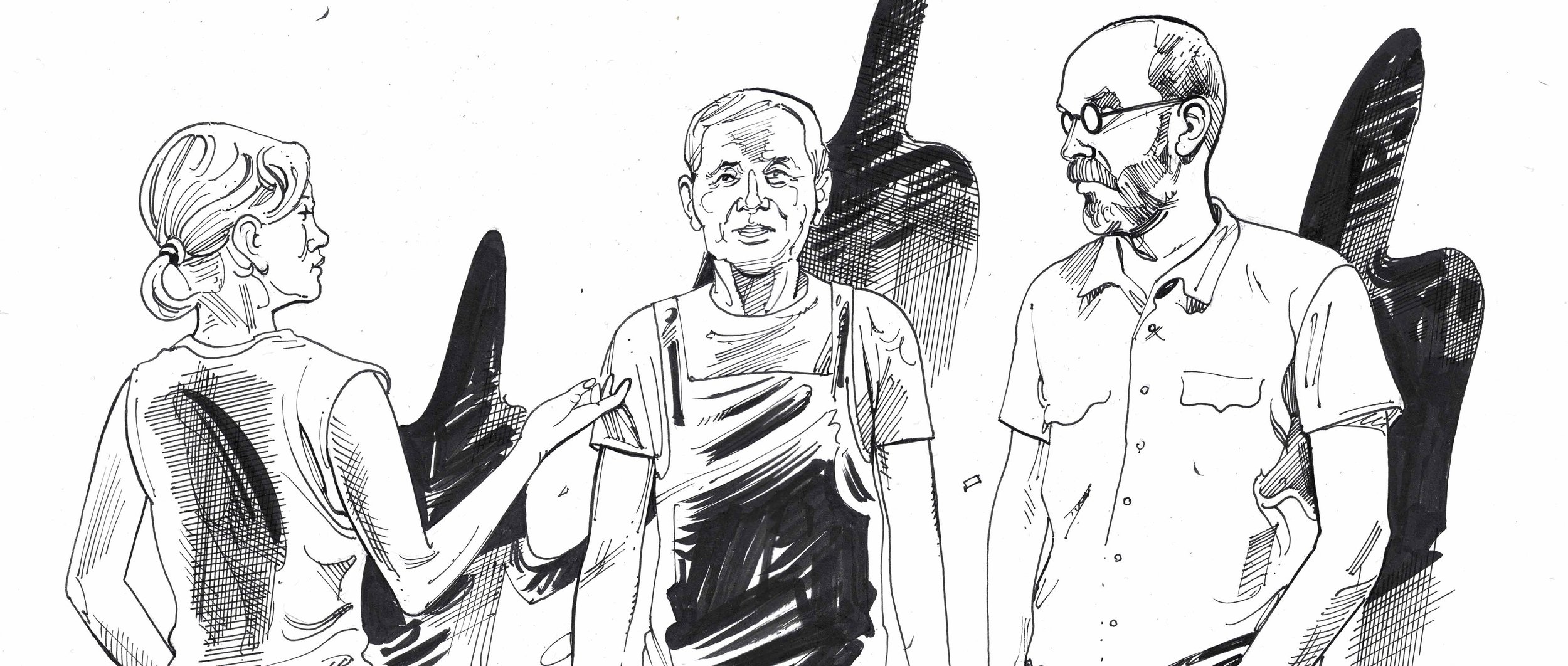“Reclaiming Dita is a graphic ethnography that tells the remarkable story of a workers struggle in post-war Bosnia-Herzegovina. It is based on an experimental research collaboration between anthropologists Andrew Gilbert and Larisa Kurtović, and graphic artist Boris Stapić.”
THE STORY
In February 2014 a series of violent protests began in the late-industrial city of Tuzla and spread to the rest of Bosnia and Herzegovina. This uprising brought this northeastern Bosnian city, and the socioeconomic issues facing its struggling industrial labor force, to the forefront of local and regional news. At the center of this emerging story was the “Dita” detergent factory, once a successful member of the Tuzla-based SodaSo kombinat which had been decimated by postwar privatization. Dita’s union was one of the best organized and most vocal during and after the protests.
Anthropologists Andrew Gilbert and Larisa Kurtovic, long-time researchers of postwar Bosnia with an interest in labor and activism, both found themselves in Tuzla in the wake of the protests, wanting to better understand how Dita’s workers were able to sustain a union-based politics where others had struggled and often failed.
Eventually, both ended up conducting separate ethnographic research projects in Dita, often in collaboration with members of the Radnički univerzitet (Workers’ University), a collective who endeavor to document the struggles of workers in Tuzla and set those struggles within the broader context of disemployment and exploitation in the region. When Dita’s workers managed to re-start production three years after their factory had been idled, Andrew and Larisa decided to join forces. In a country besieged by relentless declensionist narratives about the inevitable plunder and ruination of its productive capacities, and the collapse of the stable way of life that industrial production provided, the struggle and unprecedented victory of these workers demanded attention and analysis.
Both Andrew and Larisa were also seeking to practice anthropology differently and were excited by the ways that the graphic form might facilitate a new, more collaborative and experimental research praxis. After securing funding for the project, they engaged Sarajevo-based graphic artist Boris Stapić in 2017 and the three embarked on focused ethnographic field research in the summer of 2018, with follow up visits in 2019 and 2022. The book emerging out of this project is currently under contract for publication as part of the ethnoGRAPHIC series at University of Toronto Press.
The need for new ways of doing research is rooted in Bosnia’s recent history. The 1990s war and post-war international intervention in the country made Bosnia and Herzegovina a magnet for researchers from abroad who see in it a place to investigate nationalist politics, post-war reconstruction, the development of new norms for investigating and prosecuting war crimes, international peace and state-building, and the transition from a socialist to a market economy. Yet most of these studies are carried out according to political and scholarly agendas created elsewhere, which often have no direct connection to any public or audience in the country.
This has led some academics and activists within Bosnia to accuse foreign researchers of practicing a form of “extractivism” – coming to the country to get the data with which to make or maintain their academic careers, and producing research that is largely irrelevant and unaccountable to research participants in Bosnia because it never circulates back into the country in a form that they can engage with or use. At the same time, the conditions of research production make such practices hard to work against. Research is often a solitary enterprise carried out alone, and according to a timetable, set of expectations, and reward structure that are not conducive to maintaining long-term relationships or producing research results that might matter to research participants.
Documenting the story of Dita in a graphic medium offers a unique opportunity to explore the possibilities of working with others—other anthropologists, yes, but also industrial workers, activists, artists, labor organizers, members of the media, and politically engaged local academics. We are particularly interested in experimenting with how collaboration might influence our research practice, our methods and our goals – and how producing research that matters to participants might mean embracing its political potential.

